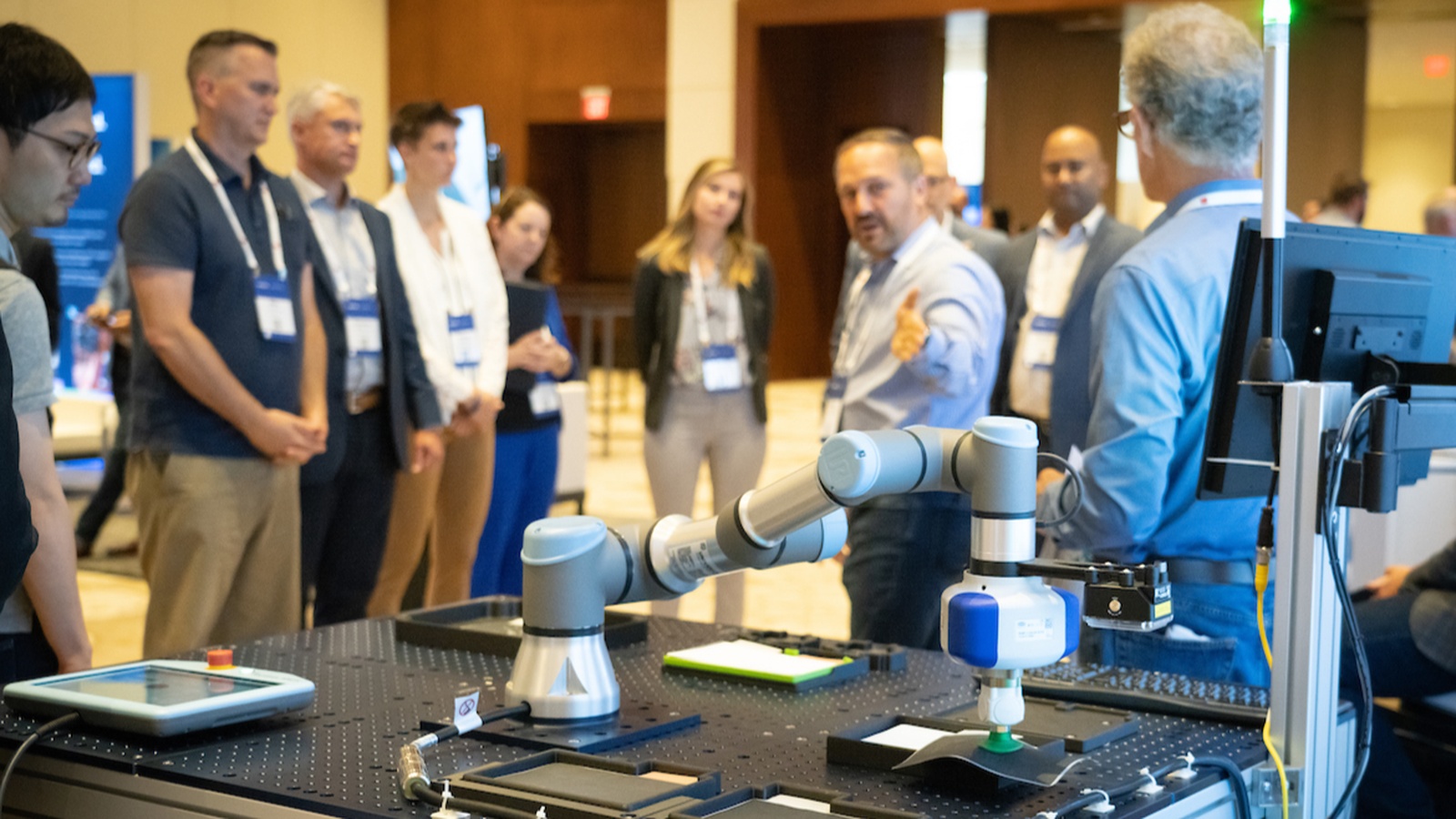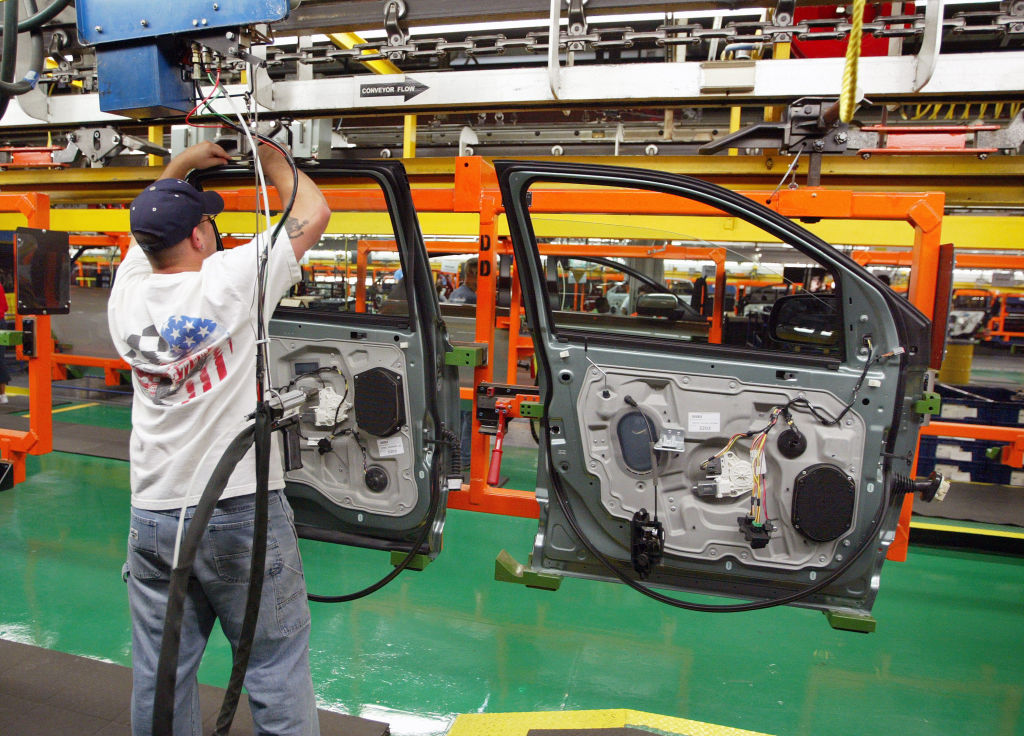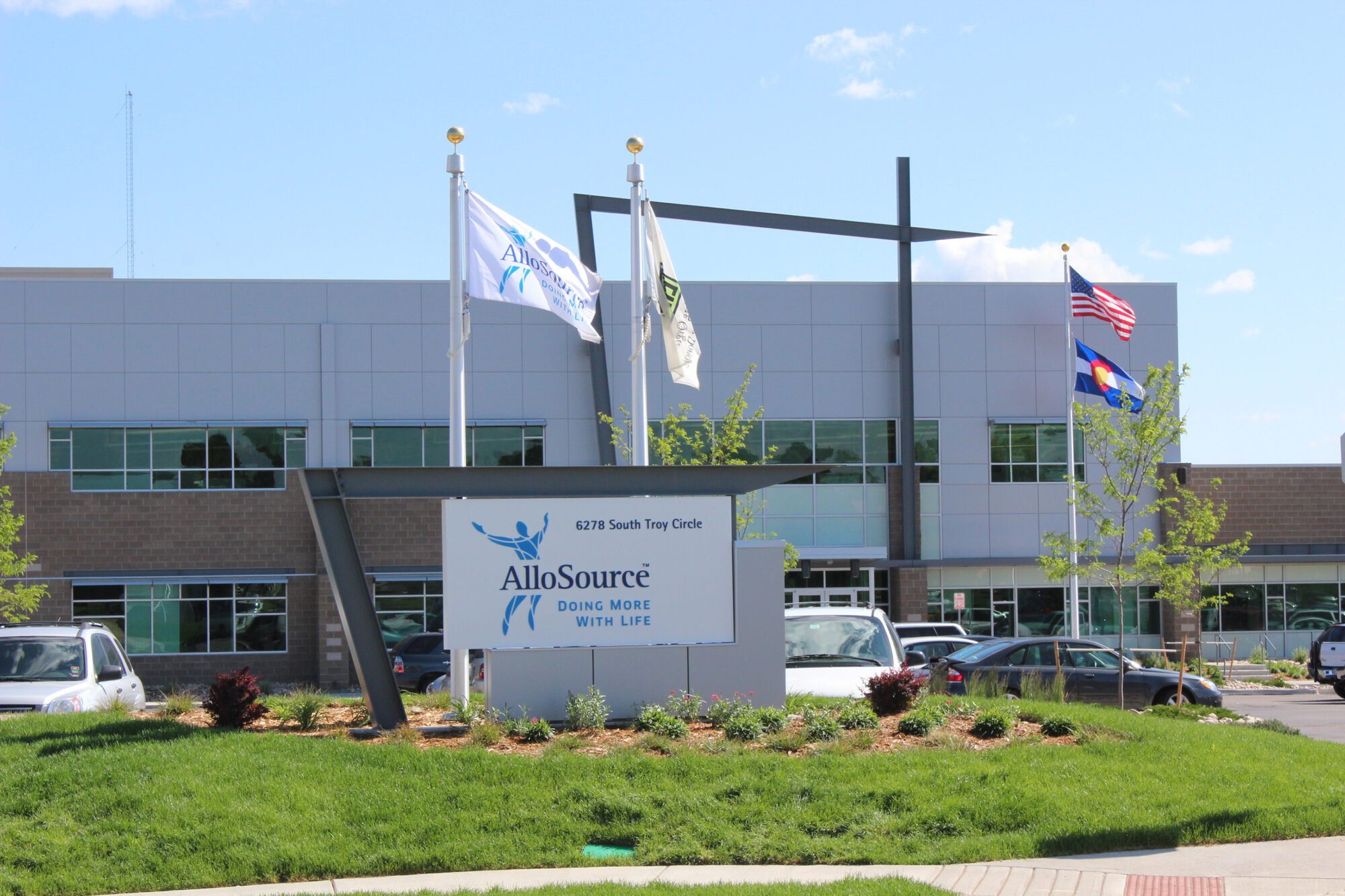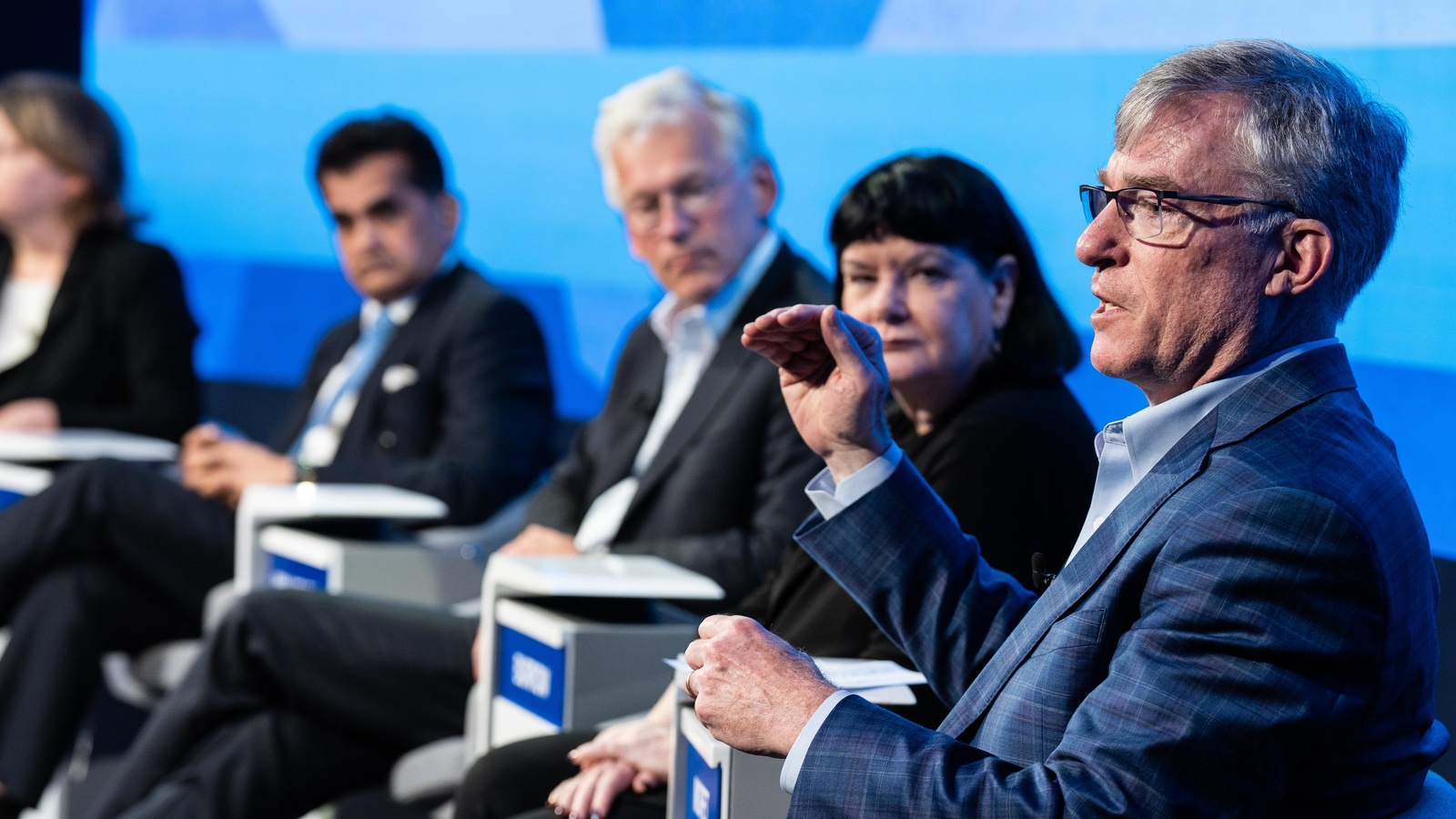Illinois Manufacturers’ Association Wins Inaugural COSMA Leadership Award
San Diego, California – For their work to attract and maintain the manufacturing workforce, the Illinois Manufacturers’ Association won the 2022 Leadership Award from the Conference of State Manufacturers Associations. COSMA members also serve as the NAM’s official state partners and drive manufacturers’ priorities on state issues, mobilize local communities and help move federal policy from the ground up in all 50 states and Puerto Rico.
“I am so pleased to present the inaugural COSMA Leadership Award to the Illinois Manufacturers’ Association,” said Kris Johnson, president of the Association of Washington Business and chair of COSMA. “These are challenging times, but manufacturers in America have demonstrated once again, as they have throughout our nation’s history, that they are equal to the challenge. All manufacturers should be proud of the role they have played in navigating the pandemic, and the Illinois Manufacturers’ Association should be especially proud of the innovative ways it has helped its members address the workforce challenges we have all faced. Congratulations to my friend Mark Denzler and his talented team.”
The association’s recent achievements included its $7 million Manufacturing Jobs Campaign aimed at attracting students, veterans, communities of color, women, ex-offenders and other individuals to the manufacturing sector. They were also asked by Governor JB Pritzker to co-chair the state’s Equipment Task Force during the pandemic and appointed by Chicago Mayor Lori Lightfoot to lead the B2B Recovery Group that included manufacturing, transportation and warehousing, construction and utilities companies in the state.
“Mark is more than an inspirational colleague and true friend. He is an amazing representative for Illinois’ manufacturing workers on the national stage,” said NAM President and CEO Jay Timmons. “At a time when there are more than 800,000 open jobs in our industry, we need the efforts of groups like the IMA to help us find that next generation of talent and strengthen manufacturing competitiveness so that we can continue to lead our economy and our country toward a better future.”
In this inaugural year, the COSMA Leadership Award drew many extraordinary applications, each demonstrating how manufacturing associations across the country are rising to meet workforce and supply chain challenges in new and innovative ways.
-NAM-
The National Association of Manufacturers is the largest manufacturing association in the United States, representing small and large manufacturers in every industrial sector and in all 50 states. Manufacturing employs more than 12.8 million men and women, contributes $2.77 trillion to the U.S. economy annually and accounts for 58% of private-sector research and development. The NAM is the powerful voice of the manufacturing community and the leading advocate for a policy agenda that helps manufacturers compete in the global economy and create jobs across the United States. For more information about the NAM or to follow us on Twitter and Facebook, please visit www.nam.org.
What Manufacturing Leaders Learned at Rethink 2022

Manufacturers flocked to Florida this summer to discuss the cultures, skills and technologies necessary for digital transformation at the 2022 Rethink Summit, the signature event of the NAM’s Manufacturing Leadership Council. The MLC is the world’s first member-driven, global business leadership network dedicated to senior executives in the manufacturing industry.
The big event: The first in-person Rethink since 2019, this year’s summit drew the largest crowd since the annual event began 18 years ago.
- The conference in Marco Island, Florida, hosted some of the most innovative leaders and teams in the industry, from companies such as Pfizer, Intel, Dow, Saint-Gobain and many more.
- Participants learned about real-world advances and shared best practices in supply chain resilience, effective business cultures, machine learning, business ecosystems and more—as explained by industry experts who put these innovations into practice themselves.
The panels: Here is a quick sample from the array of manufacturing expertise on offer.
- A Pfizer case study: Pfizer Vice President of Digital Manufacturing Mike Tomasco explained how Pfizer Global Supply transformed itself from a digitally siloed operation to a world-class digital powerhouse.
- Bridging the digital divide: A panel of leaders—including Graphicast President Val Zanchuk, BTE Technologies President and NAM SMM Board Chair Chuck Wetherington and Intel Senior Director of Industrial Innovation Irene Petrick—discussed how small and medium-sized manufacturers can keep up with the digital transformation occurring throughout the industry.
- Reaching the next generation: A panel of young manufacturing leaders from Dow, Cooley Group and Saint-Gobain North America discussed what young people are looking for in manufacturing jobs, including interdisciplinary teams and lots of communications up and down the organization levels.
A week of manufacturing: The Rethink Summit was only one highlight of a week of manufacturing events put on by the MLC. The roster of events also included the MLC’s Council Day and the ML Awards Gala.
- Council Day offers MLC members the opportunity to chart the agenda for the MLC’s next year, thus influencing how the whole industry thinks about and plans for digital innovation.
- The Awards Gala spotlights companies and individuals doing incredible work to advance M4.0. The black-tie event honored leaders and companies in 11 project categories, plus the Manufacturers of the Year and Manufacturing Leader of the Year.
- This year, the MLC named Pfizer CEO Dr. Albert Bourla the Manufacturing Leader of the Year, for Pfizer’s extraordinary and ongoing contributions in fighting the COVID-19 pandemic.
The last word: “[T]he fundamental shift in our economy to doing business digitally in all industries, including manufacturing, not only continues but is gaining greater speed and urgency,” said MLC Co-Founder David R. Brousell during an address at Rethink.
Join us next year: Keep up to date with the MLC by visiting the website and stay tuned for Rethink 2023!
What Can Manufacturers Do About Inflation?

Why is inflation happening now? What can we do about it? And how should manufacturers factor it into their plans for the future? The NAM’s Leading Edge program partnered with management consultant company Bain on a recent webinar that answered these questions and more. Here’s a quick recap.
Why it’s happening: According to Karen Harris, managing director of the Macro Trends Group at Bain, inflationary potential was building prior to the pandemic because of declining workforce growth around the world, underinvestment in energy and production and the concentration of supply chains with very few buffers in place.
- Today’s inflation, Harris said, is the result of that “inflationary potential” meeting a series of triggers, including the COVID-19 pandemic and Russia’s war in Ukraine—both of which have destabilized global markets and supply chains.
What it means: Jason Heinrich, a senior partner in Bain’s Chicago office, discussed the challenges that inflation poses to business owners.
- Among these are declining gross margins as costs of goods skyrocket; rapidly increasing labor, energy and input costs; difficult cash allocation decisions; lost sales if product availability decreases; and erosion of customer perception if price increases are too aggressive.
Strategies for success: Bain has analyzed thousands of companies over the past two decades to identify several successful strategies for accelerating performance during periods of disruption and providing future-proof against inflation.
- These strategies include expanding the CFO role to support the C-suite in navigating turbulent times; enhancing growth through customer engagement efforts; being strategic about price increases; building resilient and growth-focused supply chain operations; scaling and doubling down on automation as wages increase; and investing in building the best workplace to attract top talent in a difficult labor market.
- “The research that we’ve done over a couple of decades suggests that the firms and businesses that are on their front foot and playing offense in these periods of disruption outperform their peers over a long period of time,” said Heinrich. “These are moments of truths and moments of opportunity.”
Questions to ask: According to Harris and Heinrich, there are a few critical questions businesses should be asking in the current moment to help manage inflation challenges effectively, including the following:
- How robust is customer demand, and what changes do you anticipate in the next 12–24 months?
- How do you anticipate inflation will impact your business, and what actions can you take this quarter or over the next four quarters?
- How are you assessing resilience, and to what extent should you trade off efficiency for resilience?
- How can you evolve your strategic-planning process to be more dynamic?
Learn more: For more information, check out the full webinar here.
How the NAM can help: If you’re looking for resources to achieve time and cost savings, guard against inflation and help your business solve other current challenges, the NAM’s Inflation Resource Bundle for Manufacturers can help. Click here to find out how.
Manufacturers Support Health Insurance for Older Workers

As the manufacturing industry continues to grow, manufacturers across the country are ensuring that older workers and company retirees have the support they need—including through health care options like Medicare Advantage.
What it is: Medicare Advantage Plans are offered by private insurance companies that have been approved by Medicare. They provide the same hospital and medical insurance as original Medicare, but with additional benefits—often including Part D prescription drug coverage, as well as vision, dental and hearing services. Medicare Advantage Plans also include a maximum out-of-pocket spending limit to offer additional protection.
- Medicare Advantage beneficiaries spend 40% less annually than those enrolled in Medicare Fee-for-Service, while also experiencing a 43% lower rate of avoidable hospitalizations for preventable complications, according to UnitedHealth Group.
- Employers have been able to take advantage of this health care model for retirees by offering what is known as Employer Group Waiver Plans.
Why it matters: Attracting and retaining a quality workforce is one of the most important challenges facing the manufacturing industry, especially as the industry confronts a labor shortage. Affordable and competitive health care benefits are one of many retention tools utilized by manufacturers.
- In 2021, 25.6% of the manufacturing industry’s workforce were 55 or older, while 5.3% were over 65, according to data from the Bureau of Labor Statistics.
- According to the NAM’s latest Manufacturers’ Outlook Survey, 80.7% of manufacturers cited the inability to attract and retain a quality workforce as a primary business challenge.
- The high-quality options provided by Medicare Advantage allow manufacturers to retain their older workers and keep them happy and healthy in their jobs.
What we’re saying: “Ninety-five percent of manufacturing employees were eligible for health insurance benefits in 2020, according to the Kaiser Family Foundation, while 99% of NAM members offer health benefits. Manufacturers are supportive of flexibility, expanding coverage options and enabling innovative models of care to maintain a healthy workforce and provide competitive benefits,” said NAM Director of Human Resources and Innovation Policy Julia Bogue.
For details on other ways manufacturers can retain older employees check out insights from the Manufacturing Institute and AARP here.
Manufacturing Leadership Council Recognizes Pfizer CEO

The Manufacturing Leadership Council—a division of the NAM that helps manufacturers leverage digital transformation—named Pfizer CEO Dr. Albert Bourla the 2022 Manufacturing Leader of the Year at the 18th annual Manufacturing Leadership Awards Gala.
The details: The ML Awards are the U.S. manufacturing industry’s biggest stage for recognizing excellence in digital manufacturing. Since the program’s founding in 2005, more than 1,000 high-performing projects and individual leaders have been honored with an award. Winners represent companies of varying sizes in a wide array of industries.
The big award: The Manufacturing Leader of the Year award was presented to Bourla for Pfizer’s extraordinary and ongoing contributions in fighting the COVID-19 pandemic.
- “Manufacturing in America today is stronger thanks to the leadership of Dr. Bourla and his team at Pfizer, including our Executive Committee member Mike McDermott,” said NAM President and CEO Jay Timmons. “Albert and Mike’s passion and dedication to defeating COVID-19 set an example for thousands of companies as our industry navigated and responded to the evolving pandemic, and their leadership and innovation will make us better prepared to respond to the next crisis.”
Other honorees: Awards were given to companies that excelled in various categories of manufacturing, including Protolabs for collaborative ecosystems, AB InBev for digital network connectivity and operational excellence, Dow for digital supply chains, General Motors for engineering and production technology, Flex and Johnson & Johnson for enterprise integration technology, AUO Corporation for sustainability and ALOM Technologies for transformative cultures.
Manufacturers of the Year: Protolabs was named the Small/Medium Enterprise Manufacturer of the Year, and AB InBev was named the Large Enterprise Manufacturer of the Year.
The last word: “Manufacturers continue to be the driving force for global economic recovery and pandemic response as they establish innovative ways to problem-solve in an increasingly complex environment,” said MLC Co-Founder, Vice President and Executive Director David R. Brousell. “Those recognized tonight have helped establish a roadmap for the future of the sector and highlight the importance of Manufacturing 4.0.”
AlloSource Honors Tissue Donors, Heals the Living

The supply chain of biotechnology company AlloSource looks a bit different from the supply chains of other manufacturers—mostly because it hinges on the donation of human tissue.
A different kind of manufacturing: For nearly three decades, Colorado-based AlloSource has transformed donated human tissue from deceased individuals into transplantable products, or “allografts,” that surgeons can use to heal living patients.
- “Something that distinguishes AlloSource among manufacturers is [that] our base materials come from donated human tissue, which makes manufacturing very complex,” said AlloSource Chief Operating Officer Dean Elliott.
- “Donors vary in age, size and many other factors, so a lot of planning takes place to ensure the gift of tissue donation is fully maximized. Each allograft takes a different amount of time to create through a variety of unique processes.”
- Common tissue recovered for donation includes skin to treat burn victims and bones and ligaments for use in orthopedic procedures to restore mobility.

Meeting a need: AlloSource, which today is one of the largest providers of allografts in the world, was founded in 1994 by three organ procurement organizations “out of a need for expertise in transforming deceased human donor tissue into transplantable products,” Elliott said.
- Today AlloSource produces approximately 200 different types of allografts, which are used in surgeries ranging from spinal fusion to shoulder rotator-cuff repair.
- In 2021, the company used tissue from nearly 8,000 unique donors to place more than 200,000 allografts in all 50 states and in 25 countries.
How it works: Following the passing of a donor, a local tissue-recovery agency has just 24 hours to recover the tissue to be made into allografts.
- “One of the miraculous things that happens when someone dies is their cells stay alive—and as long as the tissue is recovered and sent quickly, AlloSource can preserve the tissue while keeping the cells viable,” Elliott said.
Always innovating: AlloSource has made great strides in its field over the past few decades. The company recently patented a method of decellularizing skin, a process that lowers the risk that an allograft will be rejected by a recipient. The method was developed by its R&D and engineering teams.
- This method “keeps our in-house cleanroom usage at a minimum while allowing for a higher volume of processing so that we have enough allografts available to help more patients,” Elliott said.
Meaningful work: At a time of record-high job openings, the biotech organization has a high level of employee retention—thanks to “our unique mission,” Elliott said.
- “We offer competitive pay and benefits and the opportunity to grow in an evolving medical field,” Elliott said. “But we also look for people who are driven by a mission of helping others—and that culture is ingrained in our day-to-day operations.”
World’s Largest Floating Wind Farm Could Become Reality

Energy company Equinor, in partnership with ConocoPhillips, Shell and Total, is looking into the possibility of building the world’s largest floating offshore wind farm, according to POLITICO Pro’s CLIMATEWIRE (subscription).
What’s going on: Equinor said that “Trollvind,” which would be constructed off the coast of Bergen, Norway, “would have an installed capacity of about 1 gigawatt and would produce 4.3 terawatt-hours annually.”
- “The companies are aiming to make the installation economically feasible by buying as much energy as it produces and are targeting a final investment decision next year to bring the installation online in 2027.”
Why it’s important: The announcement comes as many energy companies look increasingly to offshore wind, which is set “to develop rapidly through the end of the decade.”
- Floating offshore installations such as the planned Trollvind allow for energy harvesting in deep waters where installing fixed-foundation turbines is not feasible, opening up many more areas of the water to wind capture.
- “The Global Wind Energy Council (GWEC) forecasts that floating offshore wind capacity will reach 16.5 GW by 2030, according to a recent report published by GWEC and sponsored by Shell.”
A call to U.S. action? “This continued advancement begins unlocking the technology and supply chain to build the new industry,” Business Network for Offshore Wind Director of Coalitions and Strategic Partnerships Sam Salustro told the publication.
- “[T]here is still a need for coordination between the states and federal government to ensure we have the infrastructure to support floating [wind] and can support our suppliers.”
- The West Coast leads the U.S. in floating wind-farm development.
The NAM’s take: “This announcement is part of a much larger trend we are seeing in the U.S. and around the globe,” said NAM Director of Energy and Resources Policy Chris Morris. “The NAM has been a leader in ensuring all states that want to pursue offshore wind options can. Earlier this year, we urged policy makers to repeal the 10-year moratorium on offshore wind leasing off the coasts of North Carolina, South Carolina, Georgia and Florida. We will continue to push for policies that provide diverse, secure energy options for manufacturers.”
Rockwell CEO Blake Moret Talks Supply Chains

Blake Moret thinks a lot about supply chains. The chairman and CEO of Rockwell Automation—the world’s largest company devoted exclusively to industrial automation and digital transformation—Moret is helping other manufacturers navigate the disruptions of the pandemic and the painful shortage of semiconductors.
On his way back from sharing his experiences and best practices at the World Economic Forum in Davos, Moret spoke with the NAM about the current state of the industry, his predictions for the future and what manufacturers should do to prepare.
What’s happening: Moret sees a few “overarching trends” in manufacturing: 
- First is the historically high levels of demand, which had been pent up during the pandemic and is also caused by businesses trying to expand their market share.
- Second, there is also a historic shortage of components, especially the very disruptive shortage of semiconductor chips.
- Last, of course, labor and material inflation is putting additional pressure on manufacturers’ operations.
The chip shortage: The shortage of semiconductors poses the biggest near-term problem for Rockwell and the industry, Moret notes. But the demand for chips isn’t just as simple as supply chain snarls and post-pandemic rebound; it is also caused by manufacturers working to make their products “smarter than ever before”—an industry trend that isn’t likely to change anytime in the future.
- Rockwell’s solution, says Moret, is to reduce pressure on its customers by “strengthening long-term relationships and tightly aligning technology roadmaps with existing suppliers and deploying our engineering resources to find alternatives for the most severely constrained types of chips.”
When can manufacturers expect relief from this chip crunch?
- Chip manufacturers are adding “incremental capacity,” says Moret, but “it will take a while for supply and demand to balance out.”
- “Over the next year, the situation will improve,” he adds, though manufacturers may still be dealing with constraints.
Redundancy: To cope with supply chain disruptions, Rockwell has also been adding redundant capacity into its worldwide network.
- The company is increasing the number of products that can be made in more than one facility around the world.
- “Just-in-time principles are very efficient when every link in the supply chain is doing what is expected. But with disruptions like the pandemic and chip shortages, that sort of efficiency is not totally possible,” Moret says.
- “Elements of redundancy that in the past were not able to attract funding will get funded now.”
The U.S. market is a top priority, Moret adds, and Rockwell has extensive operations here.
- “Even in a high labor-cost market, the high-trained [U.S.] workforce, coupled with advanced technology, can make products that can successfully compete anywhere on earth,” he says.
After the pandemic: Now that COVID-19 restrictions are all but over, what’s in store for Rockwell?
- Moret says that his company found that many of its jobs could be done from home. Its team buckled down during the pandemic, contributing to the production of essential products, such as packaged food and vaccines.
- Now, as workplaces have returned to “normal,” Rockwell continues to embrace a flexible work culture. Moret says its next challenge is ensuring that a workforce with such flexibility stays engaged and able to form productive collaborations.
“Workforce is very near and dear to my heart,” explains Moret. A former chair of The Manufacturing Institute’s Board of Trustees (and a current member of the NAM Executive Committee), Moret is a big proponent of developing flexible, targeted training programs.
- One such program at Rockwell, the Academy of Advanced Manufacturing, trains veterans for roles in manufacturing plants (much like the MI’s Heroes MAKE America program).
- It provides “outcome-based training,” Moret says, offering a “quicker and more hard-hitting program” that is 12 weeks long and does not necessarily require two- or four-year degrees.
What should manufacturers do? Moret has some advice for other manufacturers seeking to build more resiliency into their operations.
- He recommends developing a “product resiliency index,” which accounts for factors that affect production—the value of the product, its manufacturing complexity, how distributed the manufacturing needs to be, how many vendors are needed and more. Manufacturers should consider this right from the start of developing a product, Moret says.
- It’s also important to talk to key suppliers “to understand what their roadmaps are.” You need to know when you are relying on suppliers for products that aren’t “strategic” for them, he explains—as that could pose a problem for you down the line.
- Moret also recommends conducting this audit on both new and old products. “We’ve had to go back [to established products] to assess them with this resiliency index to make sure we’re not vulnerable.”
The last word: Collaboration with partners on supply chain issues and workforce development is key. “No one company can do it all. Being able to assemble the right team is maybe the most important starting point to emerging stronger than ever.”
For policy recommendations that address the supply chain and other challenges, and which can enhance U.S. manufacturing competitiveness, visit https://nam.org/competing-to-win/.
Ransomware Attacks Increasingly Targeting Manufacturers

Think your business is safe from hackers? You could be wrong, according to the Manufacturing Leadership Council—the division of the NAM focused on digital transformation in manufacturing.
With the incidence of ransomware attacks against manufacturers on the rise, all businesses should be on guard against cyber extortion, advises Peter Vescuso, vice president of marketing at industrial cybersecurity provider Dragos and a member of the Manufacturing Leadership Council.
How it works: Ransomware schemes often target manufacturers by disabling their operations technology and blackmailing victims into paying to restore the functionality of their systems. Manufacturers that cannot afford to have production halted by hacks often have no choice but to pay the hackers’ ransom.
What we’re seeing: Industrial ransomware attacks increased significantly in 2021, with criminal groups specifically identifying manufacturers as vulnerable and profitable targets.
- Last year, manufacturing accounted for 65% of industrial ransomware incidents, according to Dragos.
- The top three manufacturing subsectors targeted by ransomware attacks were metal components (17%), automotive (8%) and plastics/technology (6%).
- Manufacturers as a group were targeted six times as often as the second leading industrial sector, food and beverage.
Why it matters: Many manufacturers remain unprepared for ransomware attacks.
- About 90% of manufacturers have limited visibility into their OT systems, according to Dragos.
- 90% of manufacturers are also ill prepared with poor network perimeters, 80% have external connectivity exposure in their OT systems and 60% use shared credentials that make it easier for ransomware groups to infiltrate systems.
Who’s behind it: In 2021, ransomware groups Conti and Lockbit 2.0 caused 51% of all ransomware attacks, and 70% of their attacks targeted manufacturers.
- These groups successfully developed malicious business models and used underground marketplaces to outsource operations to partners who then carried out the attacks.
- Ransomware groups also fund research and development to stay ahead of the curve on security and infiltrate systems.
What’s next: “Ransomware trends are likely to continue shifting as groups reform and reprioritize and as law enforcement pursues them and takes them offline,” says Vescuso.
- “As this evolution continues to evolve, Dragos analysts believe with a high degree of certainty that ransomware will continue to disrupt all industrial operations and OT environments through 2022, in manufacturing and beyond.”
Protect yourself: To protect against ransomware attacks, manufacturers must take the necessary steps to modernize and secure their IT and OT systems. Check out NAM Cyber Cover for information and risk management solutions.
How Manufacturers Can Amp Up Their Cyber Protections

Manufacturers are used to compliance requirements. These requirements are a part of daily life; from safety to quality, manufacturers must constantly track and adhere to rules that ensure their products and processes meet certain standards.
For manufacturers that work with the Department of Defense, that includes meeting Defense Federal Acquisition Regulation Supplement cybersecurity requirements, including the highly anticipated “cybersecurity maturity model certification.”
The basics: CMMC is the U.S. Defense Department’s proposed method for checking that their suppliers have strong enough cybersecurity protections to safeguard the Department’s information. Whether it’s a prime, subcontractor or sub-tier supplier, every company doing business with the Defense Department will need to comply with CMMC to receive a contract.
The big picture: All manufacturers should secure their businesses against cyberattacks, whether or not they are obligated to under DFARS or other requirements. According to the National Institute of Standards and Technology Manufacturing Extension Partnership Cybersecurity Services Lead Celia Paulsen, one of the most important—and most often neglected—steps manufacturers can take is simply to understand the structure and information flow within their own companies.
- “A lot of companies don’t know how information flows in their companies and how their companies work,” said Paulsen. “Once you have that information, you’ll be able to scope out the rest of the compliance efforts.”
- “In some cases, you might find that all of your controlled information can be limited to one computer. If so, great! Keep it separate and you won’t need to worry as much about the rest of the business,” she added.
- “In other cases, you might find that there’s no easy way to cordon off CUI, and it might be cheaper to secure the whole business. That’s something you wouldn’t have known otherwise.”
All aspects of the business, from physical structures to software, should be considered when thinking about security. According to Paulsen, looking at your business from the outside-in can turn up problems that are easily fixed.
- “Think of it as if you were looking to protect your house,” said Paulsen. “Begin by looking at the business physically – are there locks on the doors and windows? Do you have backup power?”
- “Then look inside the house: Where are your jewels (i.e. computers) located? Are they protected from curious eyes? Are your home, guest and business networks separated?”
- “Last, go to the software and data level. Do you have backups? What do you have in your computers that keeps sensitive information secure?”
Sensitive information doesn’t just flow through an individual manufacturer; it often travels up and down the supply chain, reaching other businesses that may not be taking the proper precautions.
- It’s imperative for manufacturers to discuss these issues with their connecting businesses, Paulsen notes They should determine what requirements apply, whether access to sensitive information is needed for either business, and if so, how it can be protected.
- “When you’re integrating IOT devices onto the shop floor or implementing AI or going to the cloud—anytime you’re purchasing something that is smart, or that has a chip—you need to consider the security of it,” said Paulsen.
- “A lot of breaches happen because of supply chain attacks where the products aren’t developed with security in mind. That is key to a long-term strategy: making sure that whatever you buy, they’re considering security.
Learn More: NIST provides additional resources, including the Small Business Cybersecurity Corner, and the Manufacturing Extension Partnership.
NAM resources: Are you prepared in the event of a ransomware attack? Built specifically for manufacturers, NAM Cyber Cover was designed to provide risk mitigation and protection. Find out more at www.namcybercover.com.
